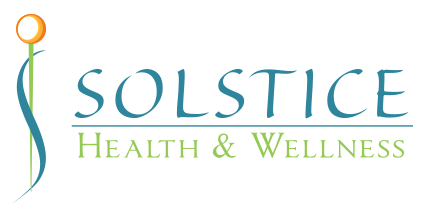Alcohol
What Is Alcohol?
Alcohol (ethanol) is a central nervous system depressant made from the fermentation of grains, fruits, or other sources of sugar. The effects of alcohol in low amounts results in a sense of relaxation and wellbeing known for its disinhibition and increased sociability. Excessive amounts of alcohol causes intoxication and may lead to lethargy, unconsciousness, coma, and death. Alcohol withdrawal symptoms may occur when attempting to stop or reduce the amount of alcohol use after a period of heavy and prolonged use.
Alcohol is among the most used recreational drugs. According to the results from the 2020 National Survey on Drug Use and Health in the United States, more people over age 12 in the United States have used alcohol in the past year than any other drug or tobacco product, and alcohol use disorder is the most common type of substance use disorder in the United States.
What Are the Immediate and Long-Term Health Effects of Alcohol Use?
Drinking too much alcohol can take a serious toll on your physical, mental, cognitive, and social health.
Immediate Health Effects of excessive alcohol
Excessive alcohol use increases the risk of many harmful health conditions. These are most often the result of binge drinking and include the following:
- Injuries, such as motor vehicle crashes, falls, drownings, and burns.
- Violence, including homicide, suicide, sexual assault, and intimate partner violence.
- Alcohol poisoning, a medical emergency that results from high blood alcohol levels.
- Risky sexual behaviors, including unprotected sex or sex with multiple partners. These behaviors can result in unintended pregnancy or sexually transmitted diseases, including HIV.
- Miscarriage and stillbirth or fetal alcohol spectrum disorders (FASDs) among pregnant women.
- Alcohol withdrawal symptoms may range from anxiety, insomnia, and restlessness to serious alcohol withdrawal symptoms such as fever, tremor, profuse sweating, and seizures to severe complications such hallucinations, mental confusion, and disorientation.
Long-Term health effects of excessive alcohol use
Over time, excessive alcohol use can lead to the development of chronic diseases and other serious problems including:
- High blood pressure, heart disease, stroke, liver disease, and digestive problems.
- Weakening of the immune system, increasing the chances of getting sick.
- Learning and memory problems, including dementia and poor school performance.
- Mental health problems, including depression and anxiety.
- Social problems, including lost productivity, family problems, and unemployment.
- Alcohol use disorder, Alcoholism, Alcohol Addiction.
- Cancer of the breast, mouth, throat, esophagus, liver, and colon.
What is Alcohol Use Disorder?
Alcohol use disorder (AUD) is a medical condition in which people continue to drink alcohol despite negative consequences. AUD may be mild, moderate, or severe, referred by some as alcohol misuse or abuse, alcohol dependence, and alcohol addiction or alcoholism.
Approximately 14.5 million people in the United States were diagnosed with AUD in 2019, including 9.0 million men, 5.5 million women, and 414,000 adolescents ages 12–17.
Is Alcohol Use Disorder a Disease?
Alcohol use disorder is a chronic disease that causes changes in the reward and control centers of the brain robbing a person’s ability to control or stop drinking. AUD has the potential for both return to use and recovery. AUD is not a matter of a person’s unwillingness, character, or lack of willpower to stop drinking.
When a person begins to misuse alcohol regularly, more and more alcohol is needed to achieve the same level of satisfaction. Drinking alcohol becomes ritualistic with every activity, causing problems for them, their family, and friends. During this time, progressive changes in the brain hijack the person’s ability to control their use to the point they can no longer choose to stop drinking, even if it means losing everything they cared for.
Is Alcoholism Inherited?
Research shows that genes are responsible for about half of the risk for AUD. Multiple genes play a role in a person’s risk for developing AUD. There are genes that increase a person’s risk, as well as those that may decrease that risk, directly or indirectly. For instance, some people of Asian descent carry a gene variant that alters their rate of alcohol metabolism, causing them to have symptoms like flushing, nausea, and rapid heartbeat when they drink. Many people who experience these effects avoid alcohol, which helps protect them from developing AUD.
However, genes alone do not determine whether someone will develop AUD. Psychological, societal, and environmental factors account for the remainder of the risk. Psychological traits such as impulsiveness, low self-esteem, and a need for approval prompt inappropriate drinking. Some individuals drink to cope with or “medicate” emotional problems. Social and environmental factors such as peer pressure and the easy availability of alcohol can play key roles. Poverty and physical or sexual abuse also increase the odds of developing alcohol use disorders.
How Do Doctors Diagnose an Alcohol Use Disorder?
Alcohol use disorder doesn’t develop overnight. In most cases, an addiction typically starts with experimental use and progresses over time into a need to use regularly, even at the expense of health and safety. Take the Self-Test to determine how doctors determine if an individual has alcohol use disorder.
What Is the Best Way to Stop Drinking Alcohol?
The most effective treatment is personalizing care to each individual’s needs and integrating services aimed at addressing substance use, medical, behavioral, mental, and social health areas to provide long-lasting positive results for the individual. Most people with AUD benefit from a combination of behavioral therapy and medication.
Are There Alcohol Withdrawal Symptoms?
Alcohol withdrawal symptoms occur due to the cessation of or reduction in alcohol use that has been heavy or prolonged. Signs and symptoms begin as early as 6 hours after the initial decline from peak intoxication and include tremor, anxiety, insomnia, restlessness, and nausea. In mildly alcohol-dependent individuals, alcohol withdrawal symptoms may subside without treatment after a few days.
More serious alcohol withdrawal symptoms occur in approximately 10 percent of individuals and include a low-grade fever, rapid breathing, tremor, and profuse sweating. Seizures may occur in more than 5 percent of untreated individuals in acute alcohol withdrawal. Another severe complication is delirium tremens (DT’s), which are characterized by hallucinations, mental confusion, and disorientation. The mortality rate among patients exhibiting DT’s is 5 to 25 percent.

2020 NATIONAL SURVEY ON DRUG USE AND HEALTH IN THE UNITED STATES
Any Use in the Last Month
Alcohol use in the past month among people aged 12 or older was 50% (or 138.5 million people). The percentage was highest among adults aged 26 or older (55% or 119.2 million people), followed by young adults aged 18 to 25 (52% or 17.3 million people), then by adolescents aged 12 to 17 (8% or 2.1 million people).
Binge Use in the Last Month
Binge alcohol use in the past month among people aged 12 or older was 22% (or 61.6 million people). The percentage was highest among young adults aged 18 to 25 (31% or 10.5 million people), followed by adults aged 26 or older (23% or 50.0 million people), then by adolescents aged 12 to 17 (4% or 1.0 million people). Note: Binge Alcohol Use is defined as drinking five or more drinks (for males) or four or more drinks (for females) on the same occasion on at least 1 day in the past 30 days.
Heavy Use in the Last Month
Heavy alcohol use in the past month among people aged 12 or older was 6% (or 17.7 million people). The percentage was highest among young adults aged 18 to 25 (9% or 2.9 million people), followed by adults aged 26 or older (7% or 14.7 million people), then by adolescents aged 12 to 17 (1% or 140,000 people). Note: Heavy Alcohol Use is defined as binge drinking on the same occasion on 5 or more days in the past 30 days; all heavy alcohol users are also binge alcohol users.
Underage Use in the Last Month
Underage alcohol use in the past month among people aged 12 to 20 was 16% (or 6.0 million people). Estimates of binge alcohol use and heavy alcohol use in the past month among underage people were 9% (or 3.4 million people) and 2% (or 669,000 people), respectively.
Struggling with an Alcohol Use Disorder?
If you or a loved one is struggling with an alcohol use disorder, call Solstice Health & Wellness to schedule an appointment, or to learn more about addiction recovery services, contact us.
Which Medications Are Effective for Treating Alcohol Use Disorder?
The US Food and Drug Administration (FDA) approved medications:
- Naltrexone works by blocking the receptors in the brain that are involved in craving alcohol or the rewarding effects of drinking. It comes either as a pill that is taken daily, or as a monthly injection known as Vivitrol.
- Acamprosate is prescribed to help people with AUD maintain abstinence from alcohol by alleviating some negative symptoms of prolonged abstinence. It is a pill that is taken three times per day.
- Disulfiram is a pill that causes unpleasant symptoms such as nausea and flushing of the skin when a person drinks. Wanting to avoid those unpleasant effects can help some people refrain from drinking.
Medications used off-label:
The term “off-label” means that the medication is used for a purpose not listed on the product label. Off-label treatment is common. In some cases, it may be the best treatment. The lack of FDA approval does not mean that the drug is not safe or that it will not work. It means that the FDA does not have the information needed to make formal approvals for other treatments.
- Topiramate is an off-label agent for AUD. Its on-label indications are for seizure, migraine, and obesity. If an individual has these comorbidities, topiramate is worth considering. One strength of topiramate is the possibility of starting treatment while people are still drinking alcohol, therefore serving as a potentially effective treatment to initiate abstinence (or to reduce harm) rather than to prevent relapse in already detoxified individuals.
- Gabapentin is another antiepileptic medication used off-label for AUD. Its on-label indications are seizure and neuropathic pain. Gabapentin may be considered in those with comorbid neuropathy (typically alcoholic neuropathy or even diabetic neuropathy). Gabapentin in combination with naltrexone was found to exhibit additive effects compared to naltrexone alone.
- Baclofen is a medication approved for spasticity treatment. The efficacy of Baclofen for alcohol dependence has yielded mixed results. It is better tolerated than topiramate or gabapentin and there is good evidence to support baclofen use in treating individuals with liver disease.
Not all people will respond to one medication and combining medications that utilize different therapeutic mechanisms of action may be essential for individuals with inadequate response to monotherapy. Clinical judgment weighing the risks and benefits is needed in a shared decision-making approach to treatment.
What Behavioral Therapies Are Effective for Treating Alcohol Use Disorder?
Cognitive-behavioral therapy (CBT)
CBT can take place one-on-one with a therapist or in small groups. This form of therapy is focused on identifying the feelings and situations (called “cues”) that lead to heavy drinking and managing stress that can lead to relapse. The goal is to change the thought processes that lead to alcohol misuse and to develop the skills necessary to cope with everyday situations that might trigger problem drinking.
Motivational enhancement therapy (MET)
MET is conducted over a short period of time to build and strengthen motivation to change drinking behavior. The therapy focuses on helping the patient identify the pros and cons of seeking treatment, form a plan for making changes in drinking behavior, build confidence, and develop the skills needed to stick to the plan.
Contingency management (CM)
CM approaches incorporate tangible rewards that are given to patients who achieve specific, measurable treatment goals. This approach is used to reinforce positive behaviors such as abstinence or regular attendance.
Behavioral couples and family counseling
Behavioral couples and family counseling involve partners and other family members in the treatment process and can play a key role in repairing and improving family relationships. The approaches incorporate positive activities, communication skills training, and identifying relapse triggers.
Brief interventions
Brief interventions are usually delivered in a few short, one-on-one counseling sessions. The physician or counselor provides information about the individual’s drinking pattern and potential risks, and then works with him or her to set goals and provide ideas for helping to make a change.
12-Step Facilitation Therapy
12-Step Facilitation Therapy is an engagement strategy used in counseling sessions to increase a patient’s active involvement in 12-step-based mutual help groups (such as AA), in addition to professionally led outpatient treatment. The counselor works with the patient to encourage, review, and reinforce their participation in AA, in a structured process that may include reading assignments, journaling, and setting AA participation goals for the week.
Mindfulness-based relapse prevention (MBRP)
MBRP combines CBT skill building approaches with mindfulness practices, which promotes flexibility rather than “autopilot” responses to physical and emotional triggers to drink.
Research shows that combining medication with counseling is more effective in treating alcohol use disorders than either modality alone. Individuals tend to have a healthier lifestyle and be more engaged in therapy, work, school, and other activities.
*Please do not submit any Protected Health Information (PHI).

